UNIT 5
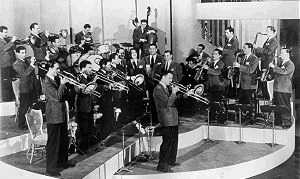
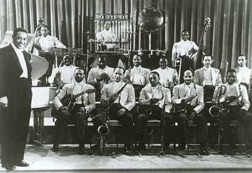
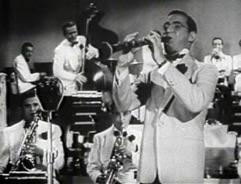
Background
-
1.Swing began during the 1920s with black dance orchestras, especially orchestras led by Fletcher Henderson and Duke Ellington.
-
2.In the early 1930s, swing entered the mainstream, so the years between 1935 and 1945 are known as “The Swing Era.”
The Sound of Big Band Swing
-
1.The sound of big-band swing evolved from the jazzy dance orchestras of the 1920s.
-
2.Two fundamental changes occurred:
-
a.Expansion and transformation of the dance orchestra, which now became a “big band” (see Duke Ellington’s band at right):
-
1)Expanded instrumentation:
-
a)Expanded horn section (usually with 5 saxophones, and 2 or 3 each of trumpets and trombones);
-
b)Rhythm section: guitar, piano, bass, drums.
-
2)New approach to melody and texture:
-
a)Melodies are more riff-based, and riffs are repeated often. Soloists invented riffs during a piece, so there would be several riffs going along at once.
-
b)Call and response among the instrumental sections, and extensive syncopation.
-
b.Changes in the rhythmic foundation of the music:
-
1)Rhythm section lays down a steady pulse;
-
2)Four-beat rhythm (rather than the 2-beat rhythm of the foxtrot). String bass, guitar, and bass drum mark each beat, with the backbeat heard more subtly than before.
-
3.Swing features the interplay between the steady timekeeping of the rhythm section and the syncopated riffs in the other instruments.
-
4.Fletcher Henderson (1897-1952)--see photo at right
-
a.Important for shaping the sound of big-band swing, even though he may not have been responsible for his own arrangements.
-
b.Attracted some of the best black players to his band.
-
c.“Wrappin’ It Up” (1934)
-
1)Illustrates the essence of swing: syncopation over a steady 4-beat rhythm.
-
a.The instruments begin with a simple riff that is at odds with the beat, so there is a conflict between the beat and the syncopated riff.
-
b.The melody grows from a different riff, which is repeated, before the melody shifts to another riff.
-
c.This is what makes big-band swing different from earlier jazz: riffs are repeated before shifting to a different riff. Earlier, the same riff was developed throughout (e. g., in Gershwin’s “Fascinatin’ Rhythm” from Week 5).
-
2)Call and response among the sections: saxes and brasses exchange riffs throughout the song.
-
*Listen to “Wrappin’ It Up,” and follow the Listening Cue in the text.
Swing as Popular Music
-
1.The swing era was the one time that jazz was a truly popular style.
-
2.Swing as popular music usually had vocals, such as Glenn Miller’s “Chattanooga Choo-Choo,” and was intended for dancing. But there were a few instrumental popular hits, such as Count Basie’s “One O’Clock Jump” and Miller’s “In the Mood.”
-
3.Glenn Miller (1904-1944)--see photo at right
-
a.Trombonist and leader of the most popular band of the era.
-
b.Nicknamed “King of Swing,” but moved between swing and sweet.
-
c.Had both instrumental and vocal swing hits, as well as sweet hits (“Moonlight Serenade”).
-
d.“Chattanooga Choo-Choo” (1941)
-
1)Popular swing hit from the movie, Sun Valley Serenade (1941).
-
2)Fun vocals by Ted Beneke (saxophonist) and the Modernaires--see photo at right.
-
3)Special effects (train noises).
-
4)Horn growls, bent pitches.
-
5)Fast tempo.
-
6)Expanded popular song form: Introduction, then chorus, then repetition of A at end.
-
e.“In the Mood” (1939)--one of Miller’s biggest instrumental swing hits
-
-
Small Group Jazz in the Swing Era
-
1.Benny Goodman (1909-1986)--see photos at right
-
a.Clarinetist and leader of the first popular swing-era band.
-
b.Integrated his band by hiring black guitarist Charlie Christian in 1939, although sometimes Christian was not allowed to play with the band. See photo of Christian with Benny Goodman at right.
-
c.Although big bands were more commercially successful, small groups remained important for performances and also for recordings.
-
2.“I Found a New Baby” (1934)
-
a.Illustrates three important features of small-group jazz:
-
1)Jazz performance of a popular song, which was not intended for dancing.
-
2)The time-keeping of the rhythm section, which is essential in swing.
-
3)Sophisticated improvisational techniques blur the boundaries between swing as a popular style and swing as an artistic jazz style:
-
a)Soloists include Goodman on clarinet (see photo at right), Count Basie on piano, and Charlie Christian on electric guitar.
-
b)Christian was the first important player to use electric guitar. His solos point to the future of jazz--to the bebop style that would appear after 1945.
-
b.The original popular song had a chorus in AABA form (32-bar song form). Here the jazz group improvises several choruses on the song.
-
*Listen to “I’ve Found a New Baby,” and follow the Listening Cue in the text.
Big-Band Jazz in the Swing Era
-
1.Count Basie (1904-1984)--see photo at right
-
a.Pianist and bandleader, Basie was important for making improvisation central in big-band swing.
-
b.Led a big band known for its driving rhythm section and gifted soloists.
-
c.Many of Basie’s hits were created in performance, with little planning outside of a melody and supporting chords (harmonies)--called a “head” arrangement; so, improvisation was central to the style.
-
d.“Jumpin’ at the Woodside” (1938)
-
1)fast tempo;
-
2)bass and guitar mark the beat with the drums keeping time and marking the backbeat;
-
3)dense texture with layers of syncopated riffs;
-
4)simple riff repeated many times;
-
5)many solos, especially by tenor saxophonist, Lester Young.
-
2.Duke Ellington (1899-1974)--see photo at right
-
a.Pianist, composer, and band leader, Edward Kennedy (“Duke”) Ellington led the most distinctive big band of the era .
-
b.Created unique tone colors, by blending timbres in unusual ways:
-
1)Hired musicians who had unusual sounds or who produced special effects (such as a “growl” or a muted sound);
-
2)Kept his band fairly stable over the years, so he could experiment with timbres.
-
c.Ellington actually composed jazz, because he controlled the structure of his pieces.
-
d.Ellington’s music is not intended for dancing, just as the Goodman hit above.
-
e.Other important features include exotic harmonies, careful use of dynamic levels, and a good sense of pacing.
-
f.“Ko-ko” (1940)
-
1)Ellington uses the technique of “exchange rhythm”--the rhythm created by the call and response between sections.
-
2)In this piece, the exchange rhythm is gradually compressed: it begins slowly and gets faster as the piece goes on.
-
3)Unusual instrumental effects and repetition of riffs.
-
Looking Back, Looking Ahead
-
1.Swing brought new rhythmic energy to popular music as the Depression waned.
-
2.By the end of World War II, the era of big-band swing was over, but it would lead to other styles:
-
a.Jazz-influenced popular singing;
-
b.Bebop;
-
c.Upbeat rhythm and blues.
Photos
-
1.Fletcher Henderson’s Orchestra
-
2.Benny Goodman’s Orchestra
-
3.Glenn Miller
-
4.Fletcher Henderson recording
-
5.Duke Ellington

The Swing Era


Unit Five
The Swing Era

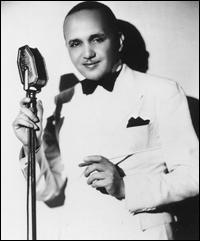
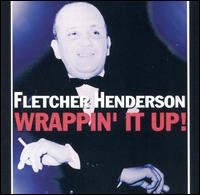

Charlie Christian (1916-1942) with Benny Goodman
Duke Ellington’s big band in 1937


Click on the green dot to see more photos of important big bands.
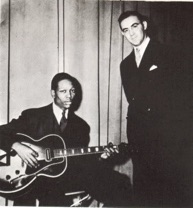

Duke Ellington at the piano

Benny Goodman on clarinet
Fletcher Henderson

Glenn Miller’s band playing “Chattanooga Choo-Choo.” The Modernaires are just underneath the string bass player
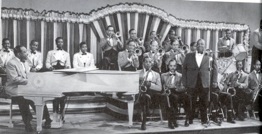
The Count Basie Orchestra

Count Basie at the piano
Glenn Miller with his trombone
